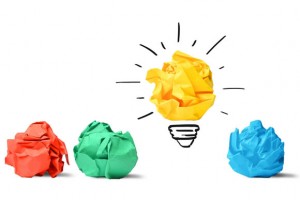

 Are you prepared to face a brand disaster? If your brand reputation is disparaged and word is spreading quickly, what will you do?
Are you prepared to face a brand disaster? If your brand reputation is disparaged and word is spreading quickly, what will you do?
Every business needs to have a brand reputation monitoring process in place as well as a plan to act if content and conversations start spreading that could hurt the brand, sales, and profits.
If you don’t have a brand disaster response plan, follow the 10 steps below to ensure you create one that will work.
1. Define roles.
Who will do what when a brand disaster strikes? Document it in your disaster recovery plan.
2. Educate everyone.
Every person on the marketing team needs to fully understand the entire disaster recovery plan. Every employee needs to understand the basics of how the plan works and what they are and are not allowed to say and do following a brand disaster. Furthermore, every vendor and business partner who could be affected by a brand disaster should be educated as well. For example, if your company outsources social media management to an agency, that agency needs to understand what you want them to do if disaster strikes.
3. Cross-train your team.
Disasters won’t wait until a slow day when everyone is in the office. They can happen at anytime, and key employees could be on vacation, in an airplane, or somewhere else that makes them inaccessible. It is critical that you cross-train your team so the disaster recovery plan can be executed seamlessly, even if one or more team members are at home with the flu.
4. Communicate with all stakeholders.
Prepare language to communicate with employees, media, shareholders, vendors, business partners, etc., and document how you will communicate with them. Don’t scramble after disaster strikes to put together email messages, online notices, and so on. Have them ready to go in advance, so you can send them out quickly with minor tweaks to address the specific disaster.
5. Invest in technology that supports your response.
Your response requires ongoing communication and message distribution. Make sure you have the technology that you need to ensure your messages get to the appropriate audiences quickly.
6. Put the tools in place to keep communication lines open.
How will your team communicate with each other when you’re in the midst of a brand disaster? Not only do you need technology to respond to external audiences, but you also need tools to communicate effectively with internal audiences, particularly with your team members.
7. Document steps to notify and update executives.
Communicating updates to executives should happen separately from your other internal communications, so document the steps that will be used to get these updates to executives in a timely manner when you’re in the middle of a disaster (and after the disaster). Share this plan with your executives, so they know what to expect from you and your team.
8. Prepare for all media distribution and communication channels.
It doesn’t matter where the brand disaster happens. A negative news story printed in a local newspaper could get shared in a Faceboook conversation and go viral very quickly. Therefore, your brand disaster response needs to reach audiences anywhere they get information—online, offline, and mobile.
9. Measure the disaster and respond accordingly.
All disasters are not created equal. Therefore, you need to have a process in place to analyze the threat potential of each disaster and respond accordingly. In other words, every negative comment about your brand on Twitter isn’t a threat to the future of your brand and company, but your employees need to know how to “rank” threat levels.
10. Stick to your code of ethics, mission, and vision.
Your response to brand disaster should be rooted in your company’s code of ethics and core values. Always match your actions and messages to your brand promise and your customers’ expectations of your brand.
Image: Brad Harrison
Susan Gunelius is the author of 10 marketing, social media, branding, copywriting, and technology books, and she is President & CEO of KeySplash Creative, Inc., a marketing communications company. She also owns Women on Business, an award-wining blog for business women. She is a featured columnist for Entrepreneur.com and Forbes.com, and her marketing-related articles have appeared on websites such as MSNBC.com, BusinessWeek.com, TodayShow.com, and more.
She has over 20 years of experience in the marketing field having spent the first decade of her career directing marketing programs for some of the largest companies in the world, including divisions of AT&T and HSBC. Today, her clients include large and small companies around the world and household brands like Citigroup, Cox Communications, Intuit, and more. Susan is frequently interviewed about marketing and branding by television, radio, print, and online media organizations, and she speaks about these topics at events around the world. You can connect with her on Twitter, Facebook, LinkedIn, or Google+.


